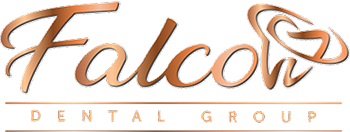
Understanding TMJ Disorder and Your Treatment Options
TMJ refers to the temporomandibular joint, which is the bone structure, muscles and connective tissues that surround the jaw and control chewing. When patients experience disorders of this joint, they are said to have a temporomandibular joint disorder or TMD. Symptoms of TMD include pain and tenderness near the jaw, as well as popping or clicking in the joint when speaking or chewing. There are many ways of treating TMJ disorders, ranging from non-invasive therapy and bite splints to injections or surgery. Left untreated, however, TMJ disorders can lead to headaches, muscle pain, malocclusion and tooth damage from grinding or clenching.
Did you know…
that TMD alone is not a disorder, but instead a collection of disorders that affect the temporomandibular joint? It is the second most common pain-causing musculoskeletal condition in the U.S. according to the U.S. National Institute of Dental and Craniofacial Research, as many as 12 percent of Americans may suffer from some type of TMD, with women twice as likely to be affected than men. But despite the prevalence and wide availability of treatment, only one out every three people with TMD fails to seek treatment.
Botox (Xeomin) for TMJ and Facial Enhancement
- Managing TMJ Discomfort With Botox: Botox (Xeomin) injections provide effective relief by calming tense jaw muscles that create pain and stiffness. These precise treatments target specific muscle groups to reduce jaw tension, decrease facial pain, and alleviate headaches associated with TMJ conditions. Patients often experience meaningful relief that makes eating, talking, and daily activities much more comfortable.
- Aesthetic Improvements With Botox: Beyond therapeutic benefits, Botox delivers cosmetic enhancements as well. The muscle-relaxing effects can slim a prominent jawline, resulting in softer facial features and a more harmonious profile. Patients seeking both comfort and subtle facial refinement find this treatment offers an effective, non-operative approach.
Each appointment is brief and convenient, with minimal recovery time needed afterward. This makes treatment easy to schedule around work and personal commitments. Your dental provider will develop a personalized approach tailored to your individual goals—whether focused on pain management, appearance enhancement, or a combination of both benefits.
